Please note: Use Hearing Protection ended on 3 January 2022. To find out what exhibitions and activities are open today, visit our What’s On section.
Use Hearing Protection: The early years of Factory Records is one of the most exciting projects I have worked on during my role as Collections Care Assistant at the Science and Industry Museum. With almost 200 diverse (and often fragile) objects—and spanning an impressive 800 m2 exhibition space—it was also one of the more time consuming in terms of object preparation!
It was the task of the conservation team to examine and evaluate every single object within the exhibition in the months leading up to installation. This involved a lot of behind the scenes work including many hours of careful measuring, along with weighing up the specific needs of each object, based on their materials and condition.
The process of condition checking all objects allowed us to better understand the needs of each object, and also helped us to determine the type of display methods that would be required to allow for clearly presented content and, most importantly, to protect objects from any change in condition whilst on display.
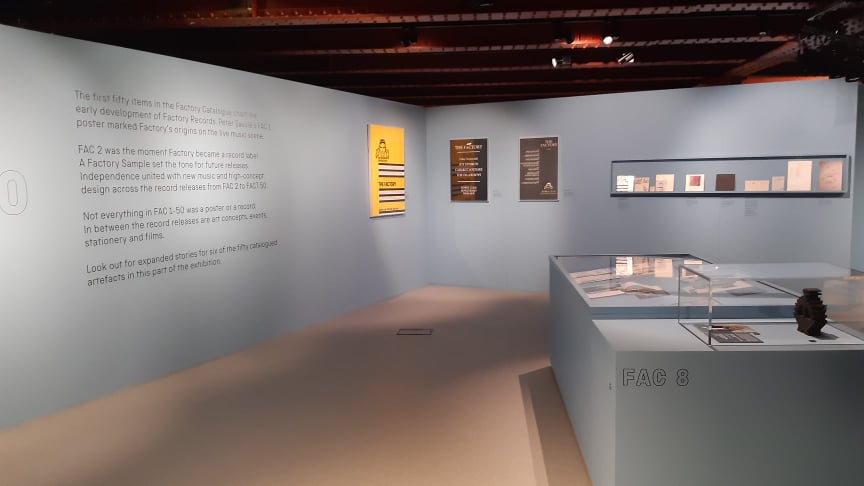
Sometimes, an exhibition has a particular emphasis on clean lines, elegant vistas and a flawless finish, with objects that appear to float effortlessly in barely-there showcases. Designed in collaboration with Haçienda designer, Ben Kelly, Use Hearing Protection is in this category of exhibition, and continues the legacy and design-centric approach that has become synonymous with Factory Records.
As far as possible, the conservation team employed display methods that maintained the ‘sleek’ exhibition design. In the first and second sections of the exhibition, a number of beautifully rendered showcases help protect a range of fascinating and irreplaceable artefacts—from the delicate handwritten letters of music royalty, to some of the more robust objects such as a cast metal Factory anvil award presented to Lesley Gilbert by Tony Wilson upon New Order selling 500,000 copies of their hit Blue Monday.
Made from carefully selected materials that have been tested to make sure they won’t harm objects, showcases help us to control the environment an object is subject to, helping us to control and monitor things like dust, pollutants, humidity and light levels. Importantly, having this barrier protects objects from the lasting damage of human touch. I have previously seen fingerprints etched into the surface of an object that has been handled without gloves at some point in its life—maybe before it became a museum artifact—meaning the object is permanently altered, which is certainly not something we would want to happen to an object in our care!
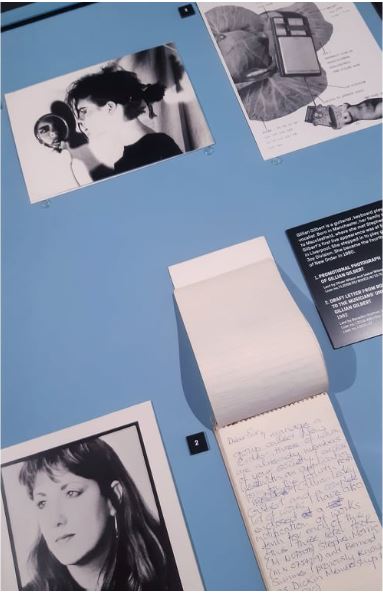
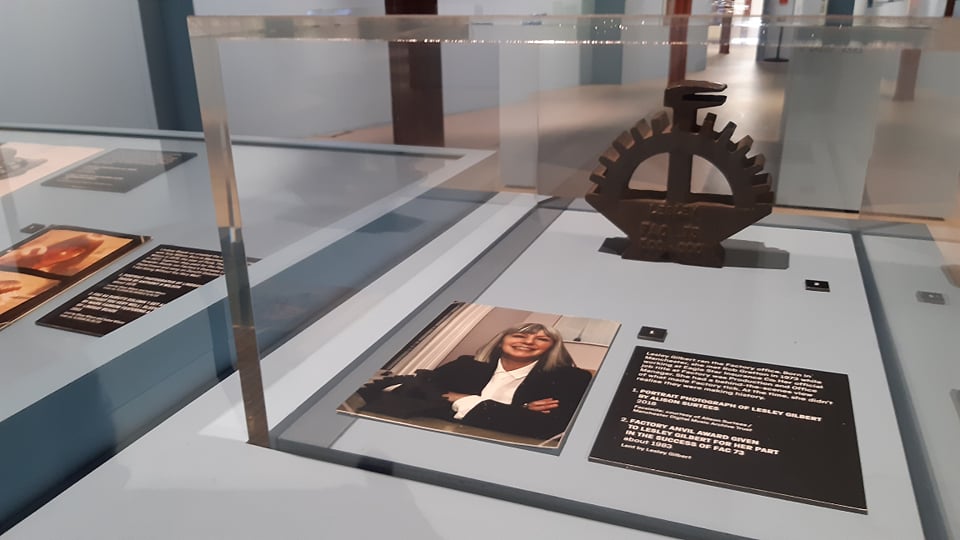
If you have been to visit the exhibition, you may have noticed that some of the objects on display are books, open at a certain page. You may also have noticed that some of these sit on a stand and are open to an angle much less than 180 degrees. These bespoke book cradles have been made by specialist paper conservators for objects assessed as requiring this extra support. They ensure that the spine of a book is not subject to any unnecessary strain.
Light levels have also been set by hand on a case-by-case basis, to make sure that light sensitive materials are protected from loss of pigment, weakening of materials and chemical breakdown—this is particularly important for the paper objects within the exhibition that contain handwritten elements, as these are highly light sensitive! By maintaining low light or lux levels, we are able to preserve these objects for many years to come.
You may (or may not!) have noticed that placed at the corners of certain objects there are little round or square dots, known as ‘bumpies’ to conservators. These help to maintain the accurate position of an object, as it has been known for objects to move or ‘walk’ ever so slightly, as a response to vibration, which strategically placed bumpies help prevent.
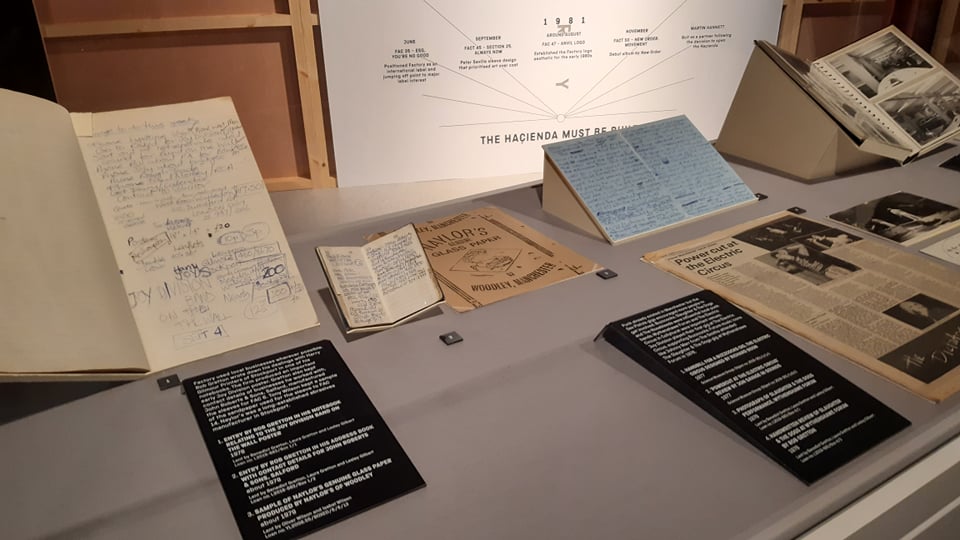
If you look very closely at some of the objects on display, you may also be able to distinguish between the two different methods that were used to secure objects to their card supports. Depending on the nature of the object, either a narrow strip of Japanese tissue was positioned across each corner of the card support and adhered at the reverse, leaving just enough slack for the corners of the object to be carefully tucked in and secured to the card. In many instances this method was sufficient to secure the object to the support and is practically invisible to the eye! The second method involved the more conventional approach of strapping narrow bands of polyester strips around the support and the object, almost like a pair of braces! Often these measures go undetected, (because that is the point!), but they are important—particularly when objects are displayed vertically, as we see in Use Hearing Protection.
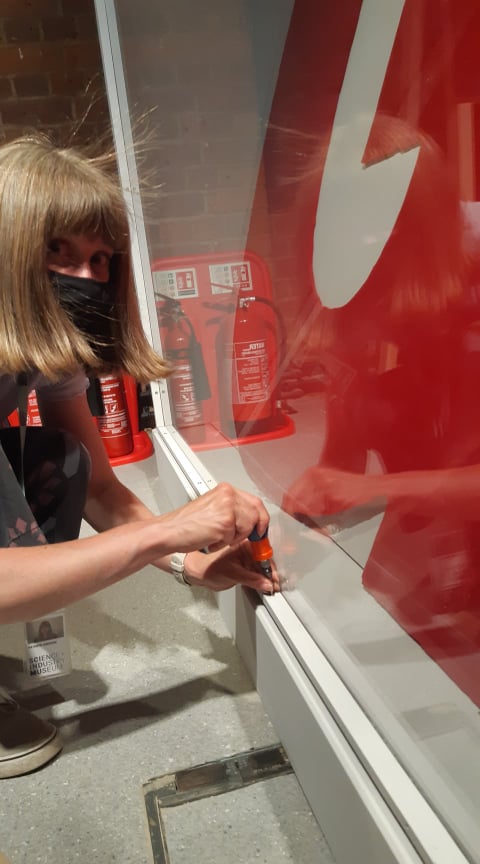
Although many solutions were found for displaying objects ahead of installing the exhibition, even the most experienced team may still encounter unexpected challenges. For Use Hearing Protection, this challenge was removing the static charge from the acrylic of the cases, which can attract unsightly dust and does not mix well with light weight objects. Luckily, with the use of a good anti-static spray and a little perseverance, we were able to dispel the static charge—preventing any unwanted chaos!
2 comments on “Use Hearing Protection… but first, protect the objects!”
Comments are closed.
A comprehensive, informative and insightful article. Highlighting information we would normally rarely consider when visiting our museums. An eye opener into the world of conservation of items of historical importance.
Thank you for this article
What an interesting insight into how the various artifacts are displayed and why. We shall certainly travel to Manchester to view this exhibition!